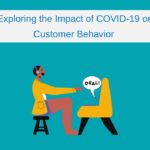Beyond KPIs and Metrics: How to Measure Outsourced Call Center Performance

In the outsourced call center world, we measure everything in terms of percentages: minutes and seconds, dollars and cents. Measuring deep into the trenches of the contact center is an absolute must. The math provides us with insights on how to improve the customer experience and gain greater value for the client. We’re constantly asking questions like, how fast are agents answering calls (Average Speed to Answer)? What is the Average Handle Time? Is the Service Level Agreement being met? All these contact center metrics and more add up to give us a picture of call center performance.
With that said, the infinitesimal specifics are sometimes so close to the action that they don’t provide a measuring stick on the overall health of your outsourced contact center partnership. It’s a classic case of “not seeing the forest for the trees.” The fine details of the data roll up into “higher level” critical measurements that are of vital importance to outsourced call center performance.
To see the “forest” or, in this case, the measure of success of the outsourcer, you must look at the contact center from a higher altitude. Go beyond the KPIs and metrics to understand how the following three critical measurements play an instrumental role in the outsourced call center:
1. Agent attrition
Is your outsourced provider able to retain agents? How does their attrition rate compare to the industry average? Lower-than-average attrition indicates a center with more tenured, experienced agents, ultimately benefiting your customers. Less hiring also contributes to lower agent training costs. High attrition rates can be a sign of a bumpy road ahead for optimal call center performance. (That said, be aware that not all attrition is created equal. Read more here for the truth about reported attrition rates.)
2. Forecasting
Forecasting can often be underestimated in measuring contact center performance. To achieve a high-resolution forecast, a center should look at historic queue trends, down to every half hour of every day. They need to know if there any new products, seasonality, promotions, or other factors that will increase call volume. Equally important is understanding call drivers and how metrics like Average Handle Time (AHT) stack over time. And let’s not forget about measuring actual versus the forecast. If the forecast is consistently off, then that could be a sign of other problems in the process. The more accurate the forecast, the tighter the client and contact center can plan and schedule the staffing model.
3. Process Adherence
This is an area of contact center performance where clients are focusing more and more attention. Companies want to know why their customers are calling. This requires the agent to follow the correct process and enter in key attributes to the CRM or agent desktop. It could be information about their current membership plan or feedback on their last purchase that will help the client take the insights to improve the level of service or queue up a targeted marketing campaign. If a center can’t adhere to the defined process, the ripple effects will be in lost opportunities for clients to impact the customer experience.
Strengthen Your Call Center Performance
Every contact center has ample tools and technology to report on thousands of data points. These data points are essential to forecasting, staffing, understanding customer interactions, and more. What they don’t easily provide is a high-level view of overall call center performance. This is especially true as the landscape of customer care shifts and the customer experience evolves. The real value in measuring call center performance comes in rolling up the numbers into digestible insights that communicate the health of your customer interactions. Going beyond the transactional data can help you determine this.
The topic of contact center performance is constantly evolving. We’d love to chat about your current customer care needs and how you’re measuring the health of your program. Book a call today to discuss further.


![What You Need to Know When Looking for a New Contact Center Outsourcer [Slideshare]](https://blueocean.ca/wp-content/uploads/2017/07/What-You-Need-to-Know-When-Looking-for-a-New-Contact-Center-Outsourcer-150x150.png)

